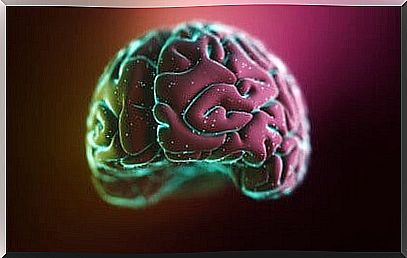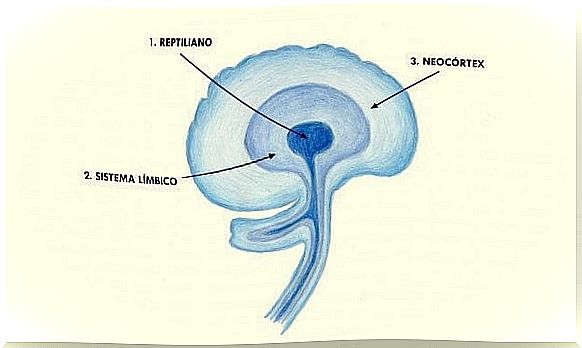Neocortex: Structure And Functions

Everything we are, what we feel and, even more, what we can become is housed in our brain. Much of our evolutionary success is due precisely to the neocortex, neocortex or isocortex, that newer and more extensive region that has made possible such sophisticated processes as communication, writing, sociability, creativity or decision-making.
David Eagleman, writer and celebrated neuroscientist at Stanford University, points out that each brain is unique and singular like a snowflake. No two are alike: they reflect the result of our experiences, behaviors, and occupations. However, at a structural level we are all the result of this exceptional phylogenetic development, where the neocortex undoubtedly stands as our greatest success as a species.
Made up of a large number of grooves, six layers and two millimeters thick, it contains about 30,000 million neurons. It is a neuronal layer that covers above all the frontal lobes, whose development and specialization stands out in primates and, of course, in humans. Knowing more information about this area of our brain will allow us to know ourselves much better. Let’s see it next.

Neocortex, the “newer” and more extensive part of our brain
The neocortex is not very thick. However, it should be remembered that this structure is perfectly “folded” just below the skull. Hence the classic appearance of a brain full of furrows and convolutions. Thus, if we could extend this entire area, it would have a length close to two meters.
- Likewise, the neocortex is also divided into the two cerebral hemispheres, thus favoring greater neuronal specialization. It should also be said that humans are the only mammal that has such a high concentration of specialized neurons in such a small space.
- On the other hand, the way in which the different layers of the neocortex are connected has until recently been a mystery. However, as revealed in a study published in the journal Frontiers in Psychology , they do so in the form of a “column.” That is, they conform, according to scientists, laminar and columnar connectivity patterns.
- The human neocortex also represents 76 percent of our gray matter.
- As a curiosity, it is interesting to know that this structure is not present in birds or reptiles. However, scientists have found that many birds (such as crows) are incredibly intelligent despite not having a defined neocortex.

What functions does the neocortex have?
If we suffer a trauma to the neocortex, the consequences can be very serious. In this way, something as dangerous as not wearing a helmet when riding a motorcycle (or by bike) can mean, for example, losing the ability to communicate, and not only that. All our cognitive processes, as well as spatial intelligence, being able to recognize faces or even access our self-consciousness or sense of self, are integrated into this very distinctive area of humans and primates.
So let’s see what its main functions are.
Executive functions
We pointed it out a moment ago. In this newer and more specialized layer of our brain, it is easier for us to carry out tasks such as problem solving, decision-making, reflection, concentration, self-control, regulation of social behavior … These are high tasks. complexity that also respond to our ability to learn and also to those processes that we have integrated as a result of our evolution.
Language and writing
Language, as we know, is a human capacity that places us above the rest of the species (although it is true that some birds can also speak, what they show is mere imitation and not an authentic sense of communication).
On the other hand, the reading and writing process also responds to a series of complex processes that occur in the neocortex. We are without a doubt before a highly sophisticated capacity where we can associate written and oral symbols with a meaning.

Sensory perception
Understanding and reacting to what we see and feel is another capacity that regulates and favors the neocortex.
Motor automation
What makes it possible for us to write, drive, play an instrument or even walk upright automatically and without having to think about it? Despite the fact that for these activities we make use of more neurological structures such as the cerebellum, it should be noted that all these processes are possible thanks to the neocortex.
Skills for learning and innovation
The ability to learn and transform what we learn – to create new things – is undoubtedly the highest and most distinctive process of the human being. That is, people do not limit ourselves only to transmit information, to acquire new skills. We are also capable of transforming reality and increasing knowledge. We do this through observation, analysis, reflection, trial and error, and innovation.
This ability, that of learning and creating, has also allowed us to advance as a species. Likewise, as Juan Luis Arsuaga points out in his book “The Chosen Species” , the evolution of the neocortex arose as a result of our social interactions. Furthermore, it is known that the size of this structure had a direct relationship with the number of individuals that formed a social group.
Therefore we cannot leave aside an even more interesting aspect. We continue to evolve. What’s more, it was in 1999 when neuroscientists discovered the great neuroplasticity that the neocortex presents. That is, the human being continues to create neural connections throughout his life. Our experience and conduct can favor the ability to create a stronger, more skilled and more resistant neocortex over time …








